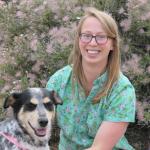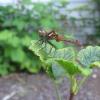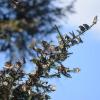Select updates from our team of restoration ecologists, entomologists, plant ecologists, and researchers.
The Xerces Society manages the largest pollinator conservation program in the world. We work with people from all walks of life to create habitat for bees, butterflies, and other beneficial insects—and hundreds of thousands of acres of flower-rich habitat have been planted. We also offer certifications: Bee Better Certified for farmers and food companies who are committed to supporting pollinator conservation in agricultural lands, and Bee City USA and Bee Campus USA for cities and colleges dedicated to making their community safer for pollinators.
With staff based in more than a dozen states, and offering a diverse array of expertise, it can be hard to include everything that is achieved, but we hope these regular digests featuring updates from team members help illustrate the impact of their work. In this edition, Alina Harris describes a community-based habitat project in New Hampshire to help monarch butterflies and other pollinators and Kaitlin Haase shows the varied audiences and range of topics covered in recent webinars in the Southwest.
Savoring the Magic of Wildlife: Community-Driven Pollinator Conservation
Alina Harris
Nestled between a forest preserve and an old hayfield just outside Keene, NH, Hillside Village is a not-for-profit senior living retirement community whose residents have a strong interest in pollinator conservation. The babbling Black Brook runs through the property, alongside a path that leads community members through the previously managed hayfield to an area where they can sit and savor the magic of nature.
The
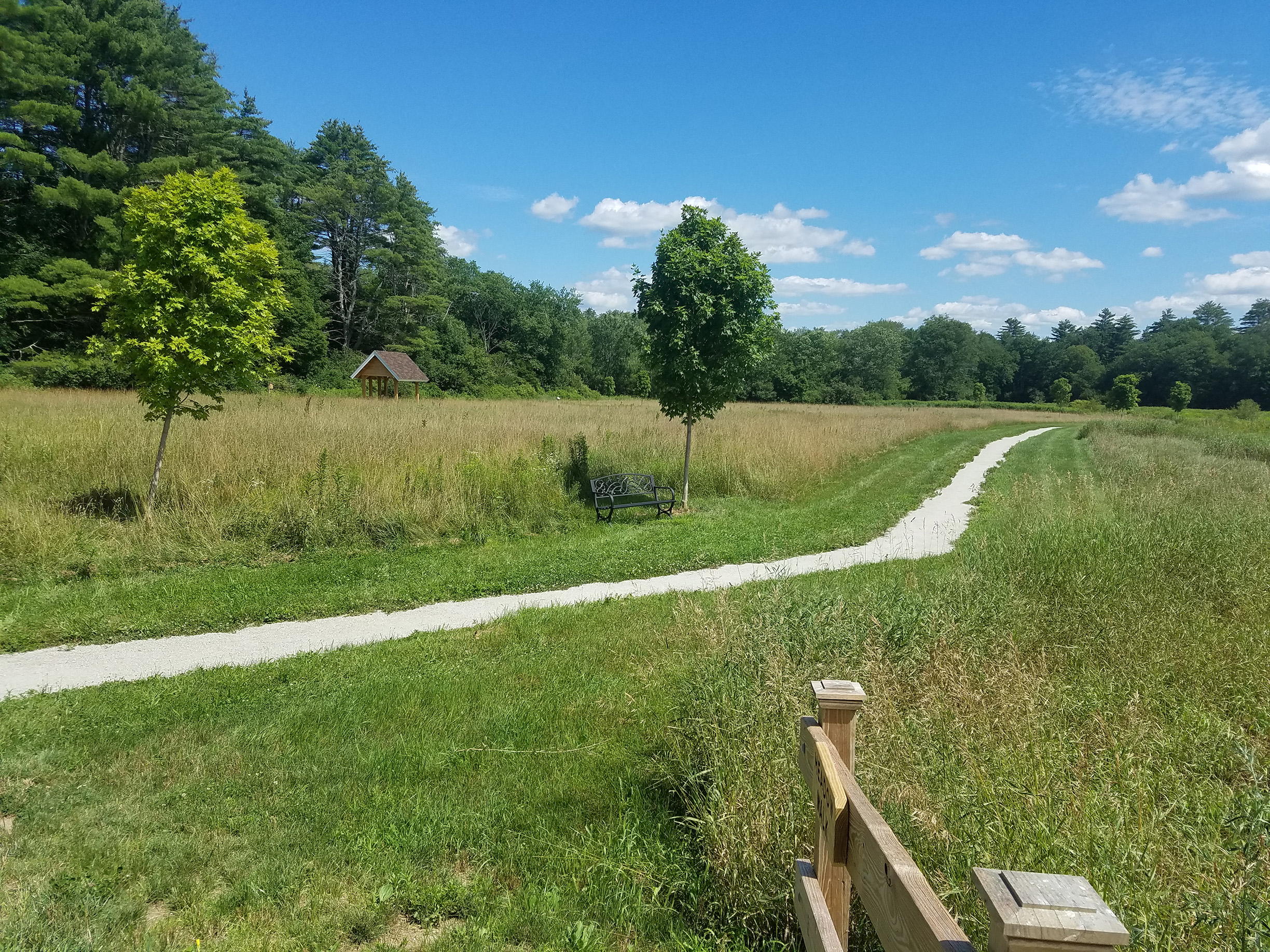
Hillside Village outside of Keene, NH, is integrating wildlife into its landscaping. After passing over the Black Brook via a footbridge, a path leads through an old hayfield to a gazebo-like structure where folks can sit and savor the magic of nature. A portion of this area will be enhanced with native flowers and grasses. (Photo: Xerces Society / Alina Harris.)
In an effort to enhance their pollinator habitat and educational outreach, Hillside Village supported community members to seek funding for pollinator plants. They applied for and were selected recipients of the Conservation Opportunity Fund, a small grant that is funded and administered by the Cheshire County Conservation District. The district reached out to Xerces/NRCS for technical assistance on site preparation, and establishment and maintenance of the pollinator meadow.
The first step is to convert a 0.4-acre patch of existing non-native sod into a weed-free seed bed, which can be a 1–2-year task. Since Hillside Village is committed to not using pesticides, we recommended smothering the vegetation by placing an opaque tarp on the site with many sandbags to anchor it to the ground. We also created a customized seed mix of mostly perennial native plants and native grasses suited to the site conditions. Come fall, the tarp will be lifted, and if all weeds have been suppressed, they will direct seed just before the snowfall.
With site preparation and starting from seed, establishing a perennial pollinator meadow is a long-term commitment. To ensure bloom in the early years—and allow for quicker gratification on the project!—we included some annuals in the mix. Hillside Village also hopes to install some perennial plant plugs (small, living plants) near to the direct-seeded meadow.
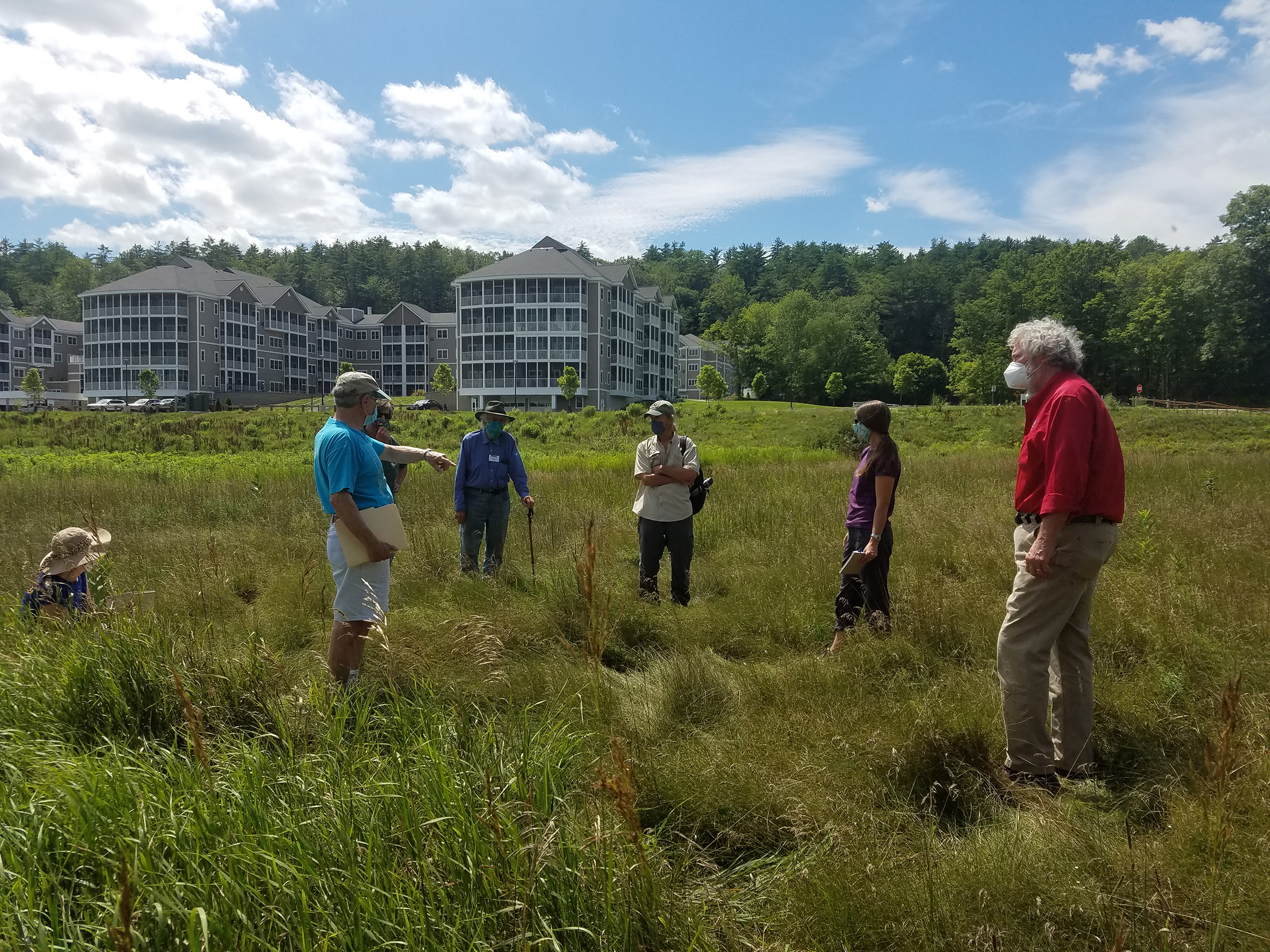
A previously hayed site that will be converted from sod to perennial native flowers and grasses to enhance pollinator habitat. Hillside Village buildings are in the background. Cheshire County Conservation District staff and board members discuss site preparation with Xerces/NRCS staff and Hillside Village folks. (Photo: Xerces Society / Alina Harris.)
If you are considering a project of your own, check out Organic Site Preparation for Wildflower Establishment for detailed information on site preparation. For Xerces resources on monarchs in all regions, visit the monarch butterfly page of the Xerces website. More specific to the Northeast, we have resources on Eastern Monarch Conservation and a Northeast Monarch Nectar Plants list. If you’re interested in creating pollinator habitat, reach out to the Xerces Society and/or some of our partners in your region, such as the Natural Resource Conservation Service (NRCS), where eligible landowners may be selected for cost-shares in pollinator conservation.
Winter Outreach with Southwest partners for Pollinator Conservation
Kaitlin Haase
While outdoor planting events and pollinator habitat creation are paused for winter, this presents the perfect time to learn and make plans for the next growing season. Our Southwest office continued virtual outreach efforts, reaching a wide variety of people from towns and cities across the Southwest as well as rangeland managers. With the reach of our partners and interest from Xerces members, over 300 viewers tuned into our three Southwest-focused webinars in December and January!
The webinar series “Building Pollinator Habitat in Towns and Cities,” was launched last fall by the Xerces Society to present region-specific guidance for creating pollinator habitats in urban spaces and encouraging community engagement in pollinator conservation. The Southwest region Towns and Cities webinar was well attended with nearly 200 viewers from New Mexico, Arizona, and surrounding states.
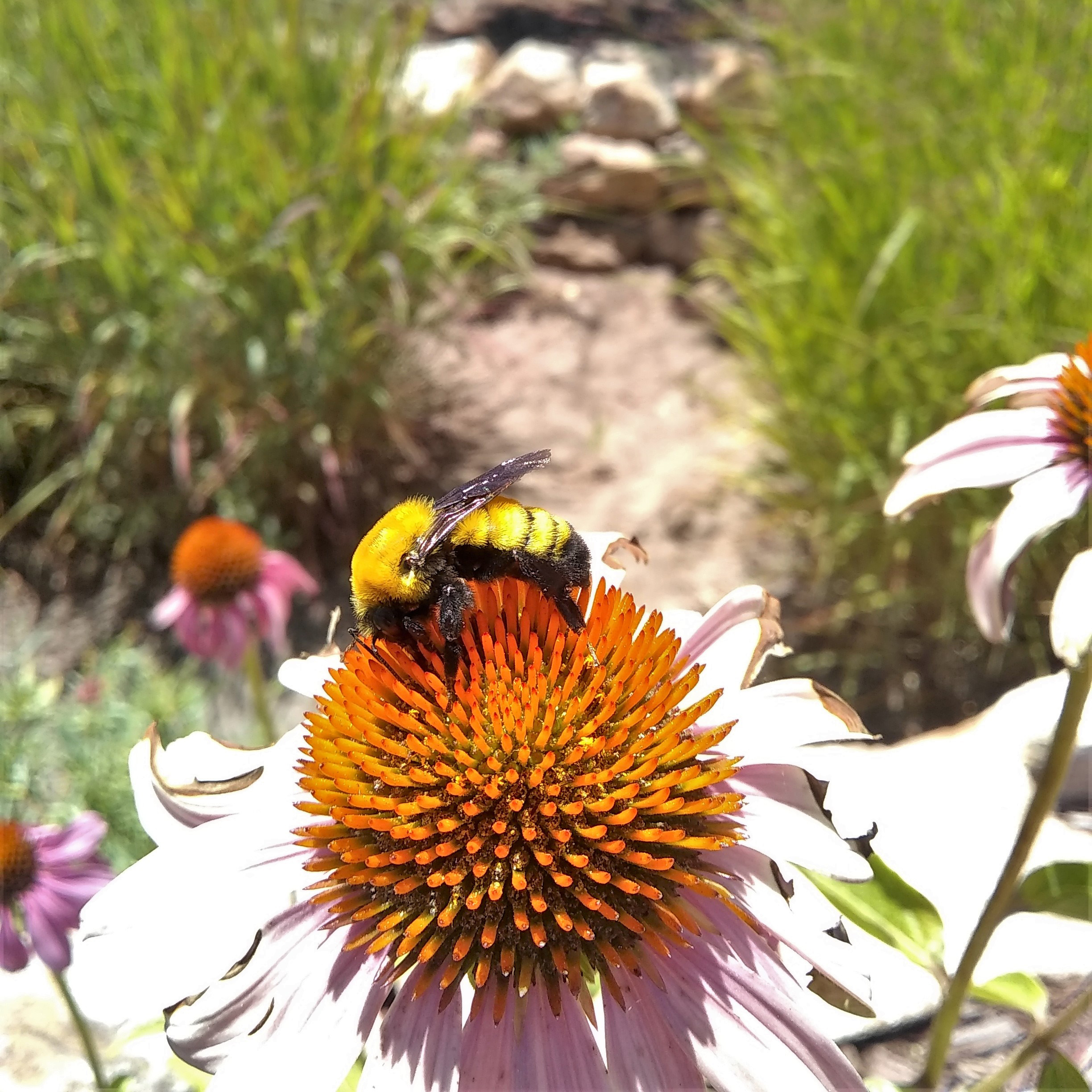
An urban rain garden in a Santa Fe parking lot offers floral habitat resources to pollinators like this Morrison’s bumble bee (Bombus morrisoni), while also contributing to stormwater management and water conservation by reducing runoff and increasing infiltration. Rain gardens are just one of many ways in which pollinator habitat can be integrated into the built environment. (Photo: Kaitlin Haase.)
Xerces Society’s Grazing Lands Pollinator Ecologist, Ray Moranz, and I partnered with staff from the USDA Natural Resources Conservation Service in New Mexico to develop and present the webinar Conserving Pollinators on New Mexico Rangelands. This covered topics such as important local rangeland plants for pollinators and how ranchers can use NRCS conservation practices and programs to support pollinator habitat improvements. Santiago Misquez, New Mexico NRCS State Biologist, and Brenda Simpson, NRCS Rangeland Management Specialist, were featured speakers in this webinar, sharing their regional expertise in rangeland management to best inform pollinator-friendly practices.
The third webinar of the winter was hosted by the Santa Fe Botanical Gardens. What’s the Buzz? Supporting and Monitoring Pollinators in New Mexico Habitats and Gardens presented guidance on how people can conserve pollinators through gardening and offered information about community science initiatives to monitor insect populations in New Mexico. Anna Walker, Species Survival Officer for Invertebrate Pollinators at the Albuquerque BioPark, discussed the importance of community scientist contributions to our understanding of insect populations and opportunities to join community science projects in New Mexico, such as adopting a monitoring route for the New Mexico Butterfly Monitoring Network.
Stay tuned for more webinars in 2021 on conserving pollinators in the Southwest or check our events page for upcoming webinars on other topics!
Further Reading
Learn more about the Xerces Society’s Pollinator Conservation Program.
Read all of our Pollinator Conservation Program Digests!
Find out how you can help Bring Back the Pollinators.

